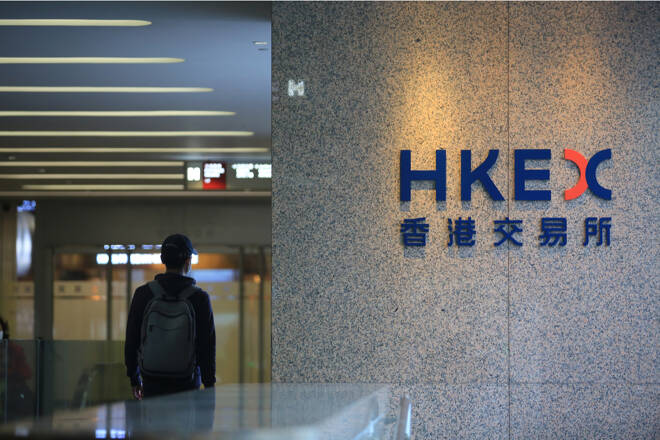Advertisement
Advertisement
Hang Seng Index and Nikkei 225: Slide Deepens on US Bond Market Shock
By:
Key Points:
- Wall Street sank as a weak 20-year US Treasury auction drove bond yields to multi-month highs, spooking investors.
- Hang Seng Index fell 0.55% as risk aversion returned, with tech and property stocks leading losses in early trade.
- Rising US yields dragged the ASX 200 lower; tech and bank stocks dipped while gold miners gained on haven demand.
Wall Street Slides as Weak US Bond Sale Spooks Investors
Wall Street faced investor backlash on Wednesday, May 21, after a weak 20-year Treasury auction deepened fiscal concerns and drove yields higher. The Dow tumbled 1.91%, while the Nasdaq Composite Index and S&P 500 fell 1.41% and 1.61%, respectively.
In the bond markets, 10-year Treasury yields jumped to 4.609%, the highest level since February, before settling at 4.597%.
Peter Berezin, Chief Global Strategist and Director of Research at BCA Research, warned:
“Just like with the tariffs last month, we about to find out what level of bond yields and the S&P 500 are necessary for Trump and Congress to course-correct on what is completely unsustainable fiscal policy.. Buckle up!”
Wednesday’s US market sell-off set a bearish tone for Asian trading on Thursday, May 22.
Hang Seng Index Succumbs to Risk Aversion
Asian equities had a grim morning session on May 22. The Hang Seng Index fell 0.55% in early trade. Concerns over US fiscal policy overshadowed improving sentiment toward US-China relations. Real estate stocks trended lower amid continued headwinds across the sector, with tech stocks also in the red.
The Hang Seng Mainland Properties Index slid 1.25% while the Hang Seng Tech Index dropped 0.66%. Heavyweights Alibaba (09988) and Baidu (09888) slid 3.25% and 1.87%, respectively.
Bloomberg TV Asia Pacific Chief Markets Editor David Ingles commented on the US Treasury yield surge, stating:
“US yields have 18-year high in sight. Ugly session on Wednesday and we’re seeing weakness in Asia early Thursday. Could happen before the weekend tbh.”
Despite the risk-off sentiment, Mainland China’s equity had a mixed morning. The CSI 300 advanced 0.13%, while the Shanghai Composite was flat.
Nikkei 225 Slides as Yen Strengthens
Japan’s Nikkei 225 slid 1.01% on Thursday morning, as safe-haven demand lifted the Yen. USD/JPY dropped 0.58% on May 21 and extended its losses by 0.26% to 143.275 on May 22. A stronger Yen could impact demand for Japanese goods and export-driven corporate earnings.
Nissan Motor Corp. (7201) lost 2.74%, while Tokyo Electron (8035) and Softbank Group (9984) fell 3.05% and 1.05%, respectively.
Early in the session, investors brushed aside a surge in machinery orders, likely stemming from tariff front-loading. Weaker-than-expected services PMI data likely tempered Bank of Japan rate hike bets, limiting USD/JPY’s risk-aversion driven losses.
ASX 200 Tracks Wall Street Lower
Australia’s ASX 200 declined 0.57%, mirroring US market losses. Rising US Treasury yields weighed on high-yielding Aussie banks, while risk aversion triggered a tech sector sell-off.
In contrast, Northern Star Resources rallied 5.1% as demand for safe-haven assets drove gold prices higher.
Outlook: Trade, Stimulus, and Geopolitics in Focus
With fiscal uncertainty rising, markets remain sensitive to US trade and budget policy developments. Renewed US-China tensions could erode risk appetite, while easing friction may provide relief.
Traders should also watch for stimulus signals from Beijing and central bank commentary. Additional easing may lift sentiment and risk asset demand.
Stay ahead of market-moving headlines—follow our live coverage for real-time updates on US-China trade talks, global stimulus policies, and central bank signals.
About the Author
Bob Masonauthor
With over 28 years of experience in the financial industry, Bob has worked with various global rating agencies and multinational banks. Currently he is covering currencies, commodities, alternative asset classes and global equities, focusing mostly on European and Asian markets.
Advertisement
